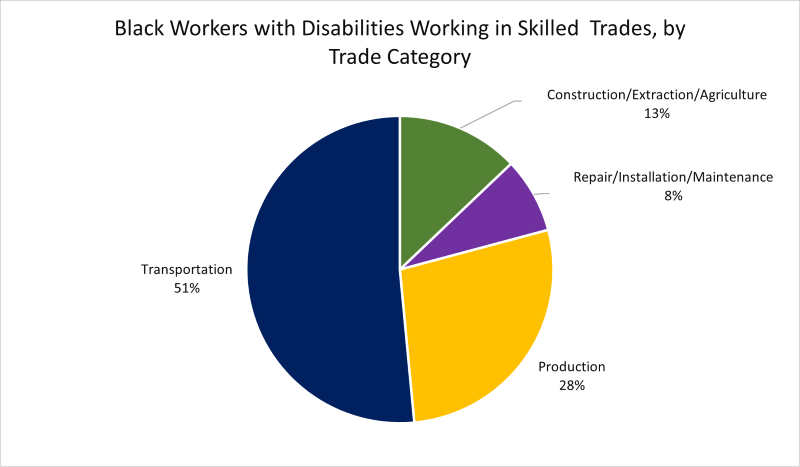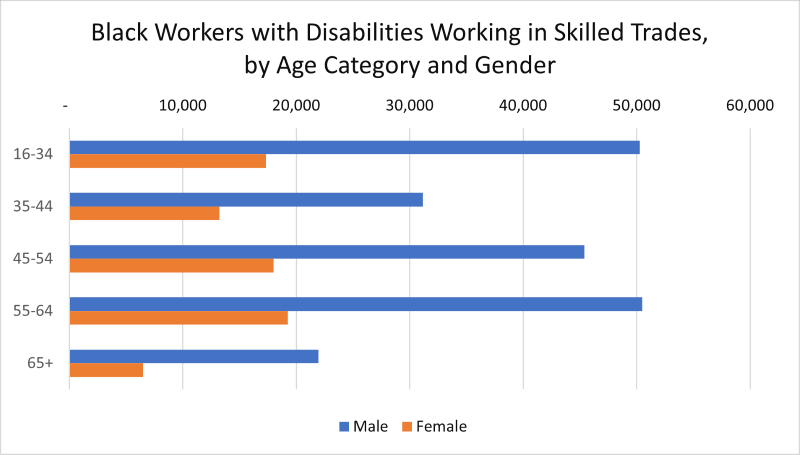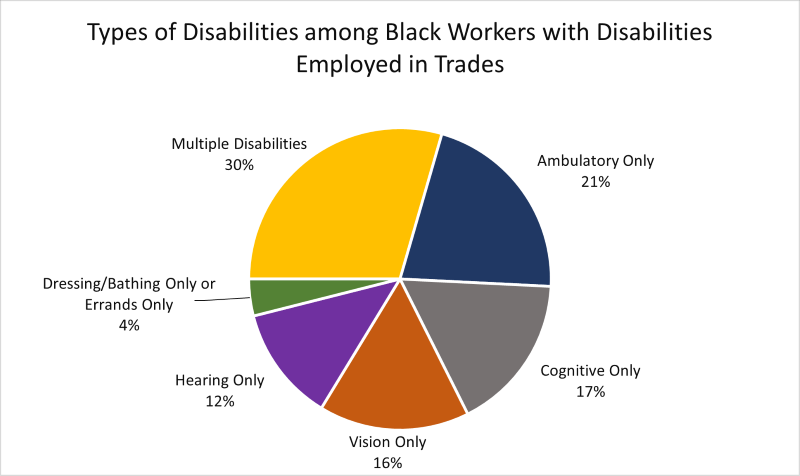Data Spotlight: Employment of Black Workers with Disabilities in Skilled Trade Professions
How many Black workers with disabilities are working in skilled trade professions?
A core goal of the Biden administration’s Good Jobs Initiative is to increase equitable pathways to good jobs in infrastructure for underrepresented groups including women, people of color and individuals with disabilities. Many infrastructure jobs, such as those in skilled trade professions, have training requirements that are shorter than a typical four-year degree program, allowing quicker entry into the workforce.
To gain a better understanding of how many Black workers with disabilities are currently working in infrastructure jobs, we analyzed Census data on Black workers with disabilities working in skilled trade professions.
There are approximately 1,160,000 Black adults with disabilities in the workforce, and of these adults, an estimated 270,000 (or 23.6%) are working in skilled trade professions. Skilled trade jobs are critical for maintaining everyday infrastructure and include the following major occupation groups:
-
Farming, Fishing and Forestry
-
Construction and Extraction
-
Installation, Maintenance and Repair
-
Production
-
Transportation and Material Moving
These data were extracted from the Census Bureau’s American Community Survey for 2017 through 2021. The industry codes are derived from the Standard Occupational Classification System (SOC), which is a federal statistical standard that is used to group workers into different occupations based on job titles.
Data highlight: Among Black workers with disabilities, 23.6% are working in skilled trades. Of disabled Black adults working in skilled trade professions, the largest proportion are working in Transportation at 51%.

Data highlight: Women make up slightly over one-quarter (27.2%) of Black workers with disabilities working in trades, a proportion that is fairly consistent across different age groups.

Data highlight: One-third of Black workers with disabilities report having multiple concurrent disabilities. For Black workers reporting only one type of disability, the most commonly reported disability is ambulatory difficulties, which is reported by 21% of Black workers who report having only one type of disability.

Data highlight: A detailed look at the distribution of trade professions across industries using the North American Industry Classification System (NAICS) shows that most Black workers with disabilities are working in the Manufacturing, Services and Transportation industries.
Data highlight: The trade industry category with the smallest wage gap between Black workers with and without disabilities is Repair/Installation/Maintenance. Note: These data include employees who are full-time (usually worked at least 35 hours per week), worked at least 50 weeks in the last year, and have positive earnings.
Data highlight: Across all occupational categories, including both trade and non-trade categories, White workers with disabilities have higher mean wages than Black workers with disabilities. Note: These data include employees who are full-time (usually worked at least 35 hours per week), worked at least 50 weeks in the last year, and have positive earnings.
David Rosenblum is a senior economist and Alexandra Ruth is a data scientist in the department’s Office of Disability Employment Policy.
McGinnis.Laura…
Tue, 02/28/2023 – 12:36